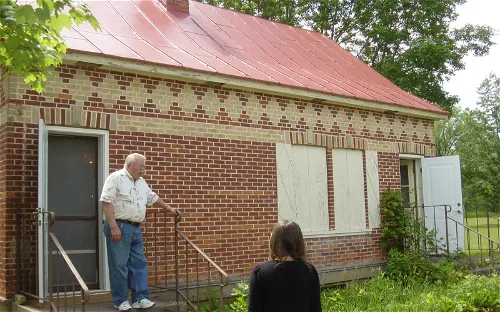Copper Culture State Park and its collection
Copper Culture State Park, located in Oconto, northeastern Wisconsin, spans across 42 acres of land. The park is a diverse mix of natural areas, farmlands, archaeological sites, and a Native American museum. This variety of attractions offers visitors a unique opportunity to explore and learn about the region's history and natural beauty.
Ancient Burial Ground at Copper Culture State Park
One of the key features of Copper Culture State Park is an ancient burial ground used by the Old Copper Complex Culture of early Native Americans, dating back to between 5,000 and 6,000 B.C.E. during the Copper Age. This burial ground is not only a significant archaeological site but also a National Historic Landmark, listed on the National Register of Historic Places in Wisconsin. It is well-protected within the boundaries of the park.
Oconto Archaic Copper Museum at Copper Culture State Park
The Oconto Archaic Copper Museum, housed within the Charles Werrebroeck Museum—Belgium Home, offers visitors a glimpse into the past. This museum is located in a traditional Belgian style farmhouse built in 1924 by Charles Werrebroeck. It showcases artifacts and photographs from excavations conducted on the park's grounds, providing a tangible connection to the region's ancient history.
Admission and Management of Copper Culture State Park
Copper Culture State Park is managed by the Oconto County Historical Society, a non-profit organization. Unlike many state parks that are managed by the Wisconsin Department of Natural Resources, admission to this park is free. While visitors do not require a Wisconsin state park pass to enter, they are encouraged to make a donation at the museum to support its upkeep and operations.
History & Anthropology Nature & Natural History Archaeology Historic house Ethnology

